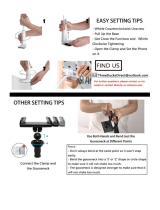18
All our engines are supplied with 12 volt electric starting
as standard. We therefore supply the main components:
starter motor, battery charging alternator, fuel control
solenoid, glow plugs, engine temperature sensor,
oil pressure sensor, control panel and a wiring loom
connecting everything together. We do not supply as
standard either the starter batteries or battery cables.
CONTROL PANELS
Heat Exchanger Cooled - We offer 5 control panels:
the ABV is standard and the A, ABVW, B, C and D are
optional. The engine harness is common to all. With our
Keel Cooled Canal range the AB panel is standard or the
‘C’ panel is optional.
1. Control Panels must be fitted in a location where the
helmsman can either see or hear the alarm system.
2. Our control panels are supplied as standard with a 3
metre multi-core cable for connection to the engine
wiring loom. As an optional extra, Beta can provide
various lengths of extension looms for runs of 5m or
more, and this kit includes a start relay to overcome
the voltage drop. (See drawing 300-58520).
3. For standard wiring diagrams see back of manual.
4. All electrical equipment must be protected from
sea water. Sea water or rust in the starter motor
will invalidate the warranty. Care must be taken
when pushing the two halves of the plug together to
ensure that individual pins do not fall out. To prevent
corrosion and assist in assembly we recommend that
the plug is packed with petroleum jelly (Vaseline)
and then carefully pushed together. The plastic boots
should cover both halves and overlap. A cable tie is
then put around to hold the two halves in position and
help prevent any ingression of water.
5. The control panels must not be installed where sea
water spray can get at them. We recommend that a
suitable flap or cover is fitted.
6. All cables must be adequately clipped and protected
from abrasion.
7. Electrical systems shall be designed and installed so
as to ensure proper operation of the craft under normal
conditions of use and shall be such as to minimise
risk of fire and electric shock.
8. Attention shall be paid to the provision of overload and
short circuit protection of all circuits, except engine
starting circuits, supplied from batteries.
9. Ventilation must be provided to prevent the
accumulation of gases, which might be emitted
from batteries. Batteries shall be firmly secured and
protected from ingress of water.
ELECTRICAL INSTALLATIONS
{
We would recommend keeping the electrical part of the
engine installation as simple and as reliable as possible.
We would suggest a dedicated battery for engine starting
and if required, a domestic battery bank for other
requirements.
Selecting the correct starter battery and battery cables
is important as incorrect selection is a major cause of
starting failure.
BATTERIES
1. There are several different types of battery available
to choose from: a) Wet Lead Acid (invented in 1859);
b) AGM (Absorbed Glass Mat - developed in 1972 as
sealed Lead Acid); c) Gel (with a gelified electrolyte)
developed in 1980; and d) Lithium-ion produced in
1991.
With boats there are two different requirements: a)
A battery to drive the starter motor and b) A battery
bank to power your domestic / auxiliary needs such as
GPS, navigation equipment, lighting, music etc... We
recommend that you talk to a battery specialist for
guidance.
2. Climatic conditions will affect power output from
batteries and at low temperatures the battery capacity
will need to be increased as performance will
decrease. (At minus 10 degrees centigrade battery
output would be under 50 percent of normal output).
This needs to be considered when first selecting your
batteries.
BATTERY INSTALLATIONS - SOME CONSIDERATIONS
{

























